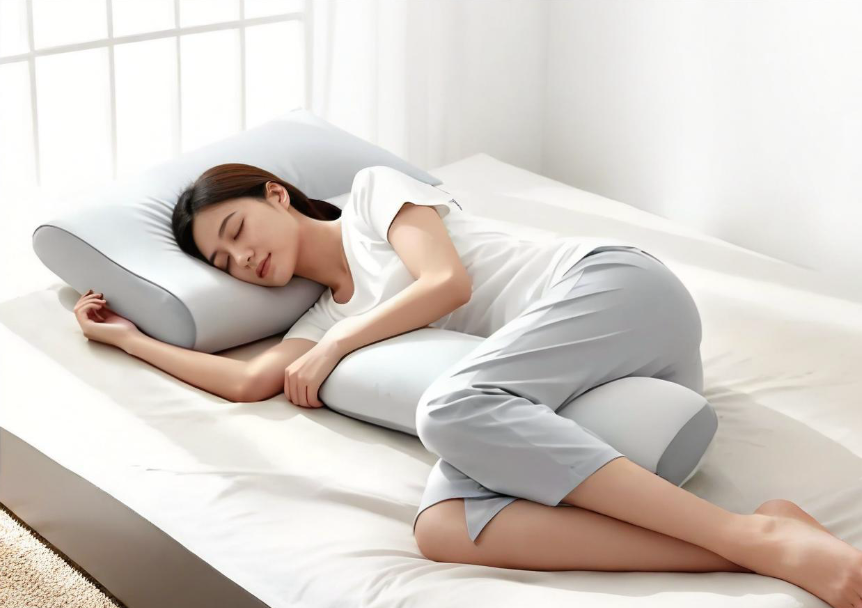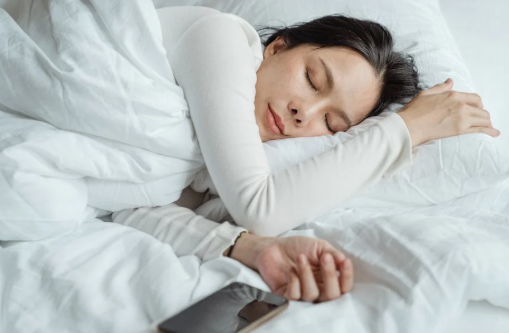Currency


Ⅰ. Introduction: Regarding Pillows, We Actually Think Too Little
Sometimes, we spend hours every day picking out clothes, but never take ten minutes to seriously consider: how many pillows should we sleep on?
Some people can sleep soundly with just one pillow, while others have to stack three layers high to feel at ease. We used to think that 'more pillows would be more comfortable', until one morning we woke up with stiff necks that made it difficult to even brush our teeth.
The small matter of sleep actually holds a lot of knowledge. The number, placement, hardness, and angle of pillows all determine our mental state the next day. Today, let's talk about this seemingly small but crucial question - how many pillows should we sleep on?

Ⅱ. Why Is the Number of Pillows Really Important
We used to think that pillows were just soft cushions for our heads - until we realized that this small pillow could actually determine whether we woke up refreshed or exhausted. A good pillow placement is not for looks, but to keep the neck and spine in the correct position, allowing us to breathe easily throughout the night.
We personally tried it over the weekend. The same bed, the equal dozing role - the simplest difference is the quantity of pillows. What became the end result? The feeling in the morning is completely different. The night before, we woke up stiff and restless all over; The next morning, I woke up feeling as comfortable as if I had just finished a SPA.
Here are our observations:
Too few pillows, the head droops too low, forcing the neck to form an awkward curve. Along with it comes the familiar morning neck pain.
There are too many pillows, and the head is almost lifted high, like lying in bed all night reading - this is not a comfortable sleeping position. It not only makes breathing difficult, but even triggers mild snoring.
The number of pillows was just right - at that moment, we suddenly realized. Relax our spine, breathe steadily, and wake up feeling light rather than heavy.
In fact, the perfect number of pillows is not a matter of "more or less", but rather the degree to which the body can naturally relax when the head, neck, and spine reach a harmonious state. At that time, sleep will become effortless.

Ⅲ. How Many Pillows Should Be Placed Under the Head?
Over the years, we have conducted numerous' pillow experiments'. In order to have a good sleep, we exchange, stack, and rearrange so many pillows that we don't even want to admit it. We have found that the ideal number of pillows largely depends on our sleeping position.
1.If we lie on our back - usually one pillow is enough
For supine sleepers like us, a medium height pillow is usually the best choice. It can slightly elevate the head and support the natural curve of the neck.
We have tried stacking two pillows before, but that only pushes our chin towards our chest - it's not good for our neck and our breathing is not smooth. A pillow with good support and moderate softness is enough.
2. If we sleep on our side - two pillows work better
Most of our team members are side sleepers, so we have conducted some research in this area. The great answer we have observed is to use pillows:
Place a tough pillow under the pinnacle to preserve the neck and spine directly.
Another softer pillow is placed between the knees to prevent hip rotation and reduce pressure on the waist.
Some of us even like to arrange them in an L-shape - one under the head and one on both sides of the body. This simple technique helps to relax the shoulders and prevent excessive twisting at night. This method is particularly effective for people with acid reflux or shoulder tightness.
3. If we lie prone - the thinner the better
We understand - lying face down feels very comfortable at first. However that is additionally the most uncomfortable posture for the backbone. After trying, we fast determined that using a skinny pillow or not using a pillow in any respect had the high-quality effect. This can prevent the neck from bending at strange angles.
For greater consolation, we now and again location a small flat cushion beneath our hips or abdomen. This may lessen the strain on the lower back and make the posture more cozy.

Ⅳ. Do We Need Any Other Pillows Besides Under Our Head?
Of course there is. Many people think that pillows are only used to cushion the head, but in fact, they can also be the "support system" of our body.
1. Back pillow: giving the back a chance to relax
We often put a cushion behind our back, especially when sleeping on our side or lying down halfway. This makes the back more stable and less prone to rolling over and pressing on the shoulders.
2. Knee pillow: reduces the burden on the waist
A soft pillow between our knees is our little mystery to snoozing. It may maintain the hips parallel and decrease stress on the lumbar spine, mainly suitable for individuals who sit down for lengthy intervals of time or have decrease back pain.
3. Pillow or chest pillow: give the body a sense of "reliance"
Some people like to hold something while sleeping. The sense of security of having something in our arms is not just a psychological effect. Pillows can prevent the body from leaning forward and relieve tightness in the chest.
So, what we call 'a few pillows' is actually the sum of the entire sleep support system, not just the one under the head.
Ⅴ. Practical Guide: How to Determine the Most Suitable Pillow Combination for Us
In case we need to understand what number of pillows we have to use, we could try following our tick list:
✅ Look at the spinal line: When sleeping on the side, align the head to coccyx in a straight line; When sleeping on our back, our neck should have natural support.
✅ Test the smoothness of breathing: After lying flat, take a deep breath. If we feel the airway is unobstructed, it means the height is appropriate.
✅ Feeling the morning state: After waking up, the neck is sore and the shoulders are hard, basically due to the incorrect height or quantity of pillows.
✅ Replace once a year: even the best pillow has a lifespan. We replace the pillow every 6-12 months.
✅ Try different fillers: the softness of down, the stickiness of memory foam, and the elasticity of latex, each feeling is different.
Our own experience is that two pillows are the most comfortable:
One harder, support the head; A softer one, pinch the legs. After being placed in an L-shape, there is almost no need to turn over all night.
Ⅵ. Several Common Misconceptions About Pillows
The more pillows, the more comfortable it is? wrong.
Too many pillows can make the cervical spine hang in the air, which can actually be more tiring.
Is expensive pillow equivalent to good sleep? Not necessarily.
Irrespective of how costly the pillow is, it is vain if it is not suitable to our napping role. We've got attempted reminiscence pillows that fee lots of yuan, however a few people fell asleep in just two nights.
Is it enough to have a pillow under our head? Not enough.
Sometimes a knee pillow or back cushion is more crucial than a headrest.
Conclusion: Find Our Own "Pillow Formula"
There is no standard answer to 'How many pillows should we sleep on'.
The real key is whether our body can completely relax that night.
We have summarized three of the most common and practical pairing schemes:
Sleeping on the back: 1 medium thickness pillow
Side sleeping: 2 pillows+1 cushion (L-shaped combination)
For individuals with lower back pain or reflux, an additional auxiliary pillow should be placed behind their back or below their knees
Everyone's body curve is different, don't be afraid to adjust. By way of converting the attitude and pillow aggregate, we may be able to sleep for an additional hour.
There's no ideal solution for sleep, most effective the only that suits us fine.
If we are planning to adjust the number of pillows tonight, I hope this article can bring us closer to "a good night's sleep".
Email cannot be empty
Password cannot be empty
Email format error
Email cannot be empty
Email already exists
6-20 characters(letters plus numbers only)
The password is inconsistent
Email format error
Email cannot be empty
Email does not exist
6-20 characters(letters plus numbers only)
The password is inconsistent